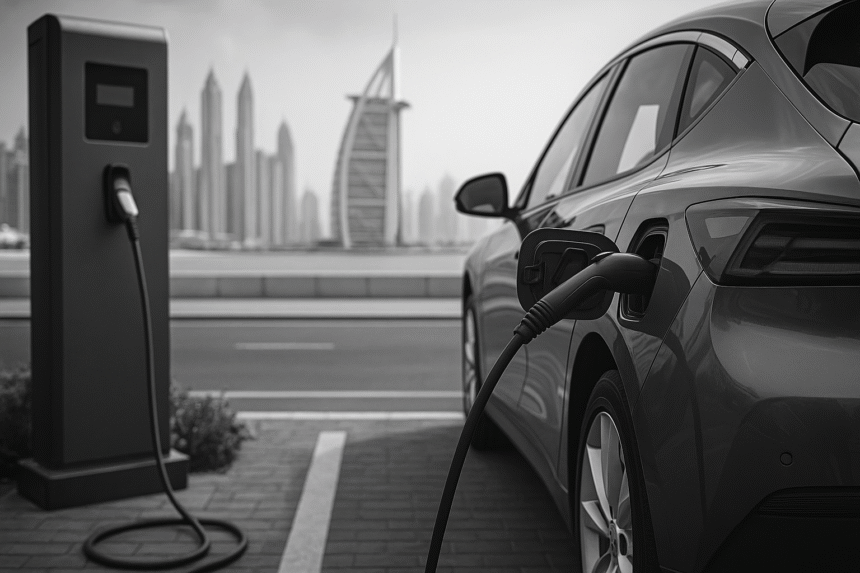Middle East Electric Vehicle Market Overview: Trends, Brands & Infrastructure Challenges
As the global energy landscape shifts, the Middle East electric vehicle market is rapidly emerging as a region to watch. While the region has long been synonymous with oil, a new wave of sustainability, government policies, and private investment is pushing electric mobility to the forefront.
For decision-makers in infrastructure, energy, and transportation, understanding the size, dynamics, and drivers of this market is essential for strategic positioning in 2025 and beyond.
Market Size and Growth Forecast
The Middle East electric vehicle market is on a clear growth trajectory. According to recent reports, the market was valued at approximately USD 4.5 billion in 2023 and is expected to grow at a CAGR of over 24% through 2030.
Key countries leading this growth include:
-
United Arab Emirates (UAE): With strong government backing, the UAE is targeting over 40,000 EVs by 2030, compared to fewer than 20,000 in 2024.
-
Saudi Arabia: Backed by Vision 2030, the Kingdom aims to have 30% of Riyadh’s vehicles electric by 2030.
-
Qatar and Oman: These nations are rolling out charging infrastructure and aligning public transportation with green mobility goals.
This projected growth isn’t just about vehicle sales—it extends across the entire value chain, from infrastructure deployment to energy integration and data services.
Top Electric Vehicle Brands and Models
The Middle East electric vehicle market includes a mix of premium, mid-range, and fleet-focused offerings. Unlike mature markets dominated by Tesla or BYD, the Middle East has its own dynamics:
Popular EV brands in the region:
-
Tesla: Still a symbol of EV luxury, especially in Dubai.
-
Lucid Motors: With a major factory in Saudi Arabia, Lucid is expected to dominate premium EV segments.
-
Hyundai/Kia: Their Ioniq and EV6 models have seen traction due to design and affordability.
-
Nissan: The Leaf is often used for ride-sharing and fleet services.
-
BMW & Mercedes-Benz: Gaining popularity among high-income segments with their e-series models.
EV adoption is also rising among delivery companies, taxi services, and government fleets, driven by both cost-efficiency and policy mandates.
Infrastructure Bottlenecks Slowing Adoption
Despite strong sales potential, several infrastructure bottlenecks are holding the Middle East electric vehicle market back from exponential growth.
Key challenges include:
-
Charging Network Gaps: Outside major cities like Dubai, Abu Dhabi, and Riyadh, public EV chargers remain sparse.
-
Lack of Unified Standards: Variations in plug types, voltages, and software platforms make cross-border driving difficult.
-
Grid Capacity and Readiness: The energy demand from EVs is still manageable today, but high-speed DC charging requires significant grid upgrades.
-
Building Integration Delays: Real estate projects are still catching up to include mandatory EV-ready parking and smart metering.
These gaps present both a challenge and an opportunity—particularly for firms involved in real estate, power, and technology integration.
What’s Driving EV Growth in the Middle East?
Several economic and demographic shifts are propelling this market forward:
1. Oil Price Volatility
Ironically, the region’s dependence on oil is pushing it toward diversification. With fluctuating oil prices and rising global pressure, governments are investing in clean energy to secure long-term stability.
2. Urbanization and Smart Cities
Cities like NEOM (Saudi Arabia), Lusail (Qatar), and Masdar (UAE) are built on sustainability principles and are designed with EVs in mind.
3. Government Incentives
-
UAE: Free parking, zero toll fees, and reduced registration costs for EVs.
-
Saudi Arabia: Locally manufactured EVs benefit from supply chain and procurement preferences.
-
Oman & Bahrain: Green procurement policies are pushing public tenders to prioritize electric options.
4. Consumer Sentiment Shift
Younger generations in the region—particularly Gen Z and millennials—are showing greater interest in EVs due to environmental awareness and tech-savvy lifestyles.
Cross-Sector Opportunities for Business Leaders
For CEOs and directors looking to align with the Middle East electric vehicle market, the opportunities span several domains:
-
Construction & Real Estate: Integrate EV infrastructure into commercial, residential, and hospitality developments.
-
Utilities: Collaborate with regulators to offer smart charging and dynamic grid support solutions.
-
Logistics & Mobility: Convert delivery fleets and shared transport to electric and benefit from operational savings.
-
Manufacturing & Assembly: Set up regional supply chains or final assembly plants to benefit from local procurement programs.
-
Data & Platforms: Build or invest in platforms that manage charging, maintenance, and energy optimization.
Conclusion: The Time to Act Is Now
The Middle East electric vehicle market is not just a future trend—it is today’s business opportunity.
For those in construction, logistics, energy, or tech, now is the time to assess how EVs fit into your growth strategy. Infrastructure bottlenecks still exist, but they are being addressed with urgency. Governments are opening doors, and early movers stand to gain the most.
Whether you’re investing, building, or supplying—the EV shift in the Middle East is your next move.



Leave a Reply